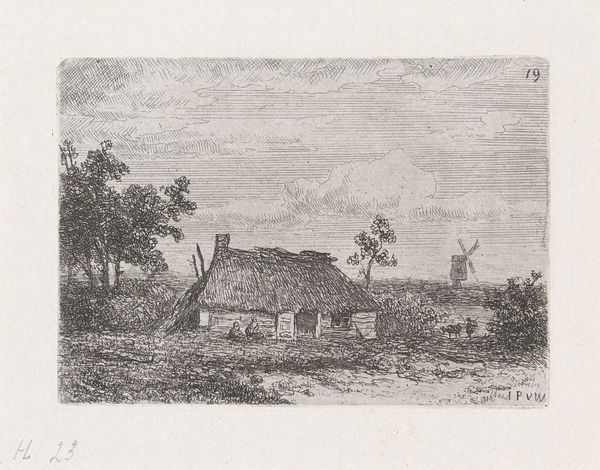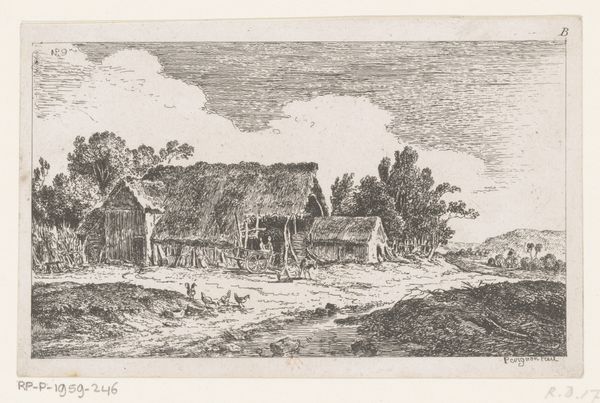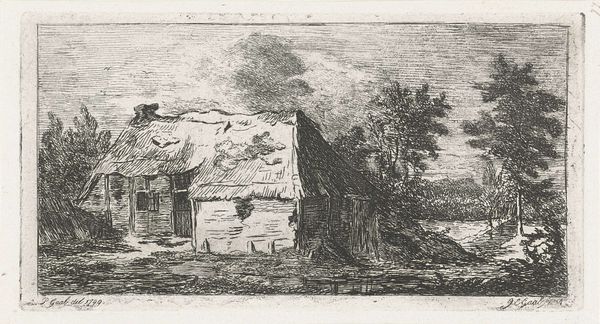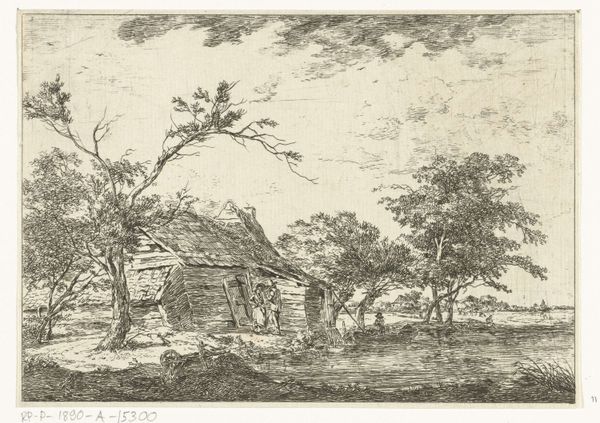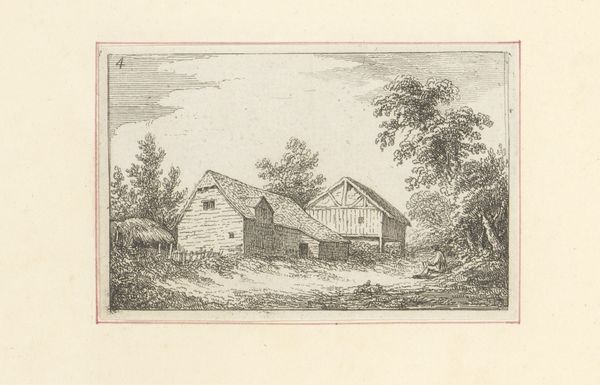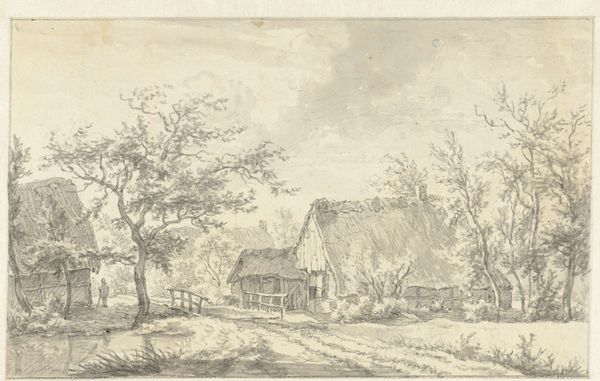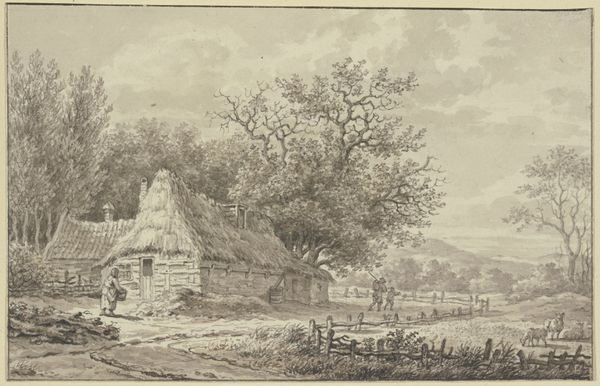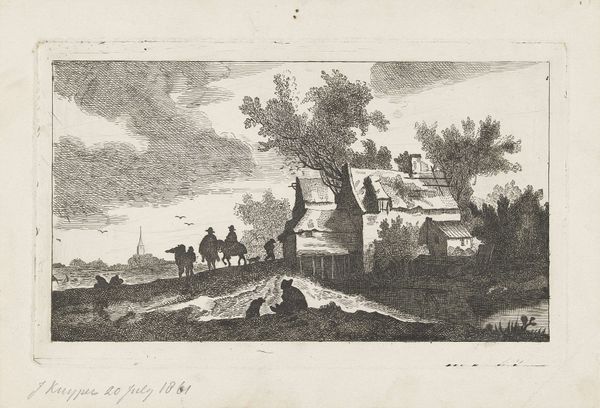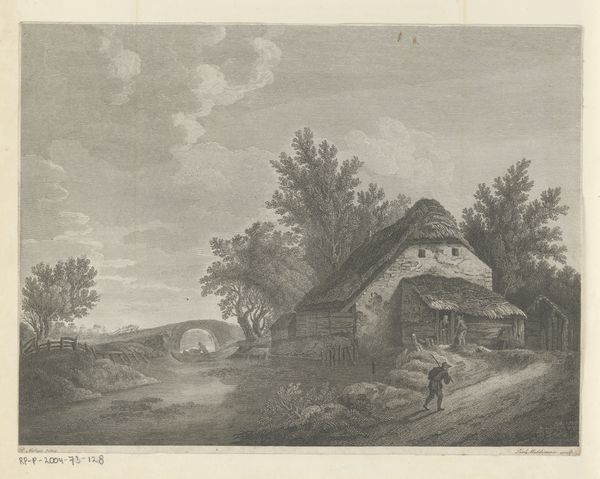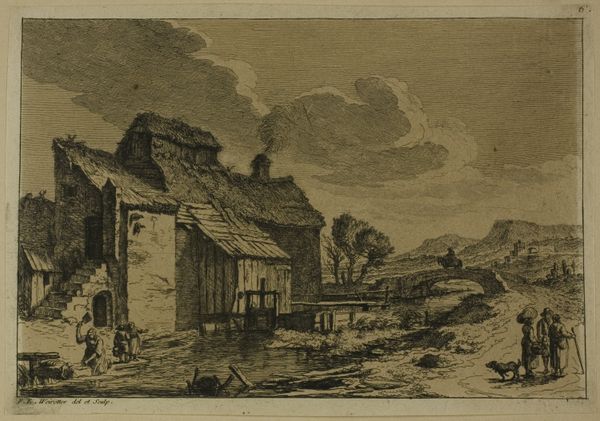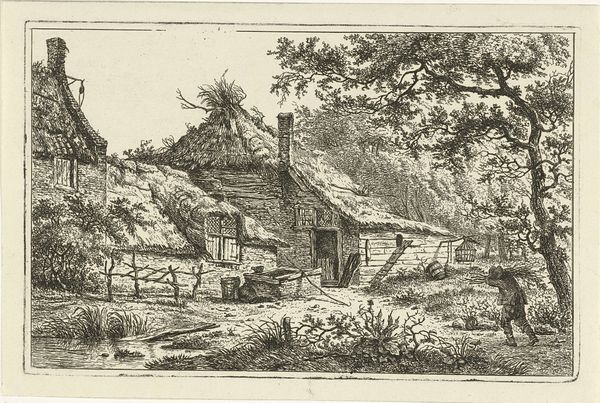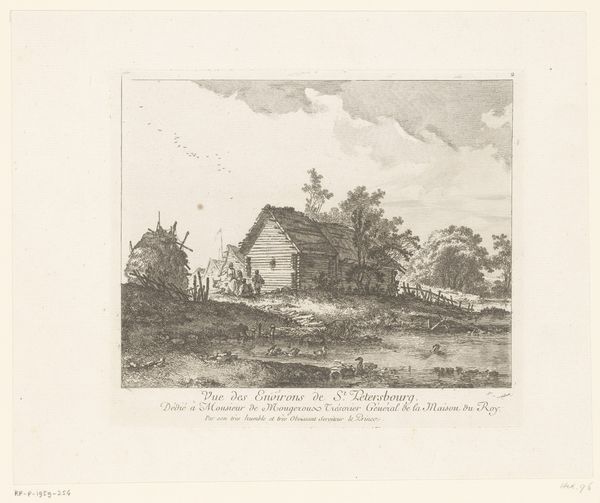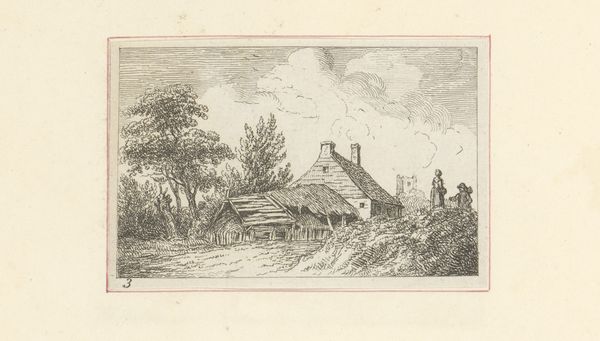
drawing, print, etching, paper
#
pen and ink
#
drawing
# print
#
etching
#
landscape
#
paper
#
genre-painting
Dimensions: 183 × 258 mm
Copyright: Public Domain
Curator: This is "Farm Scene with Boys Bundling Wood," an etching by Louis Simon Lempereur, created around 1755. It resides here at the Art Institute of Chicago. What strikes you when you first see this pastoral scene? Editor: There's a starkness to it, despite the ostensibly bucolic subject. The sky seems… foreboding, almost like a gathering storm, even though everything is rendered with such delicate, precise lines. Curator: The etching technique indeed lends itself to that precision. The cross-hatching creates a surprising depth of shadow, wouldn’t you agree? Notice how it shapes the thatched roof of the farmhouse, emphasizing the texture. Think about that humble material for a moment: thatch. The layering, the imperfections… they represent a direct connection to the land, a sustainable existence. Editor: Absolutely, the roof does feel very grounded, almost weighed down by a long, untold story of the land! But I’m drawn more to the figures in the foreground. Those boys bundling wood. They seem so… incidental. It’s like they're simply another element of the landscape. Their actions— gathering kindling— it feels like a routine more than a chore. Curator: Right. Think of it within the context of genre-painting – a celebration of everyday life and ordinary people, popular at that time. The boys, even as small figures, embody the idea of industry, essential labor contributing to the larger cycle of the farm. Also consider the birds – see the three dark specks punctuating the scene – as well as the precarious fence. Editor: Those birds, like a distant symbol! Like souls taking off from earth. And I love the vulnerability of that broken fence, it suggests a life lived outside neat boundaries, or at least fought for with resilience. Curator: There's a certain honesty in that dilapidation, yes, revealing perhaps more about the nature of survival than a perfectly manicured garden could ever tell. It offers a raw glimpse into what existence meant. Editor: It makes you wonder about the human relationship to the landscape. I wonder what aspects Lempereur may have wanted to highlight and why. I mean, it’s more than just picturesque; it’s a record, an imprint of choices made from long ago. Curator: Exactly. Each choice—from the angle of the house to the curve of a cloud—tells us something, allowing us to see ourselves, in some small way, within the frame. Editor: Looking again I wonder if the landscape and everything represented might be far more than I give it credit for. Food for thought!
Comments
No comments
Be the first to comment and join the conversation on the ultimate creative platform.
